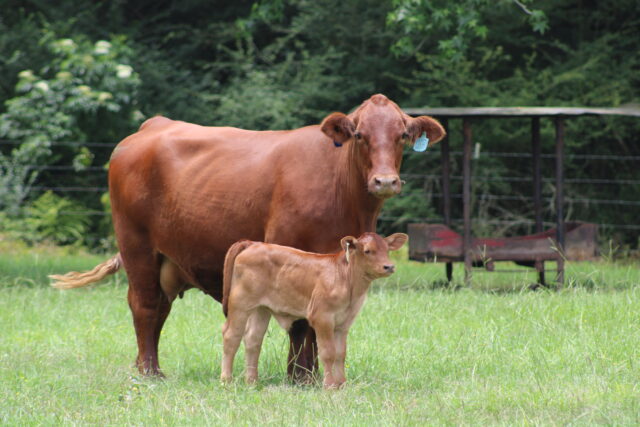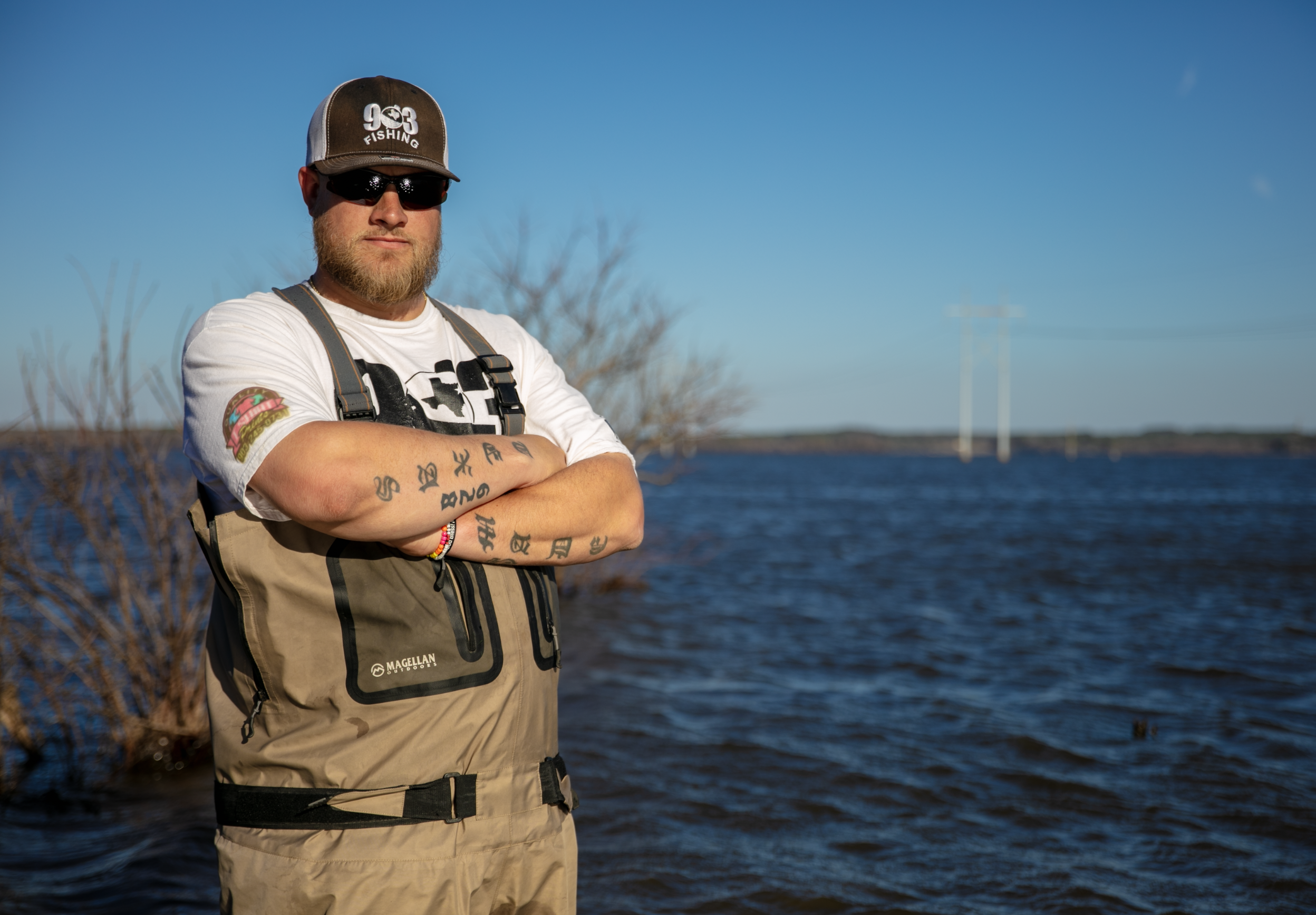by Kyle Caldwell
International Brangus Breeders Assn.
As I get older, I find myself saying things that my dad and grandpa say quite a bit. Classic phrases like, “You know it’s not the heat, it’s the humidity” have worked their way into my vocabulary. Dad and grandpa are wrong about this summer though, because it has been the heat AND the humidity.
These 115°F days have been hard on everyone, none more so in my mind than your local cattle rancher. It is a rancher’s job to make sure their cattle not only survive but thrive in harsh environmental conditions such as these. Cattle laid up under shade trees or fighting turtles for space in the bog are not out doing their job grazing or breeding; and cattle that are not doing their job are costing you money. To combat this problem, the best thing that you can do to take your operation to the next level is to invest in better genetics by incorporating Brangus into your herd.
The idea to strategically crossbreed Angus and Brahman cattle to create a new breed began at the USDA Experiment Station in Jeanerette, Louisiana with the first crosses made around 1912. Eventually, the cross of 5/8 Angus and 3/8 Brahman was determined at that time to combine the carcass quality, growth and early maturation of Angus and the heat tolerance, adaptability and longevity of Brahman to the highest degree; thus the Brangus breed was born. Around that same time, Clear Creek Ranch in Welch, Oklahoma, the Essar Ranch in San Antonio, Texas, and some individual breeders in various parts of the U.S. and Canada were carrying out their own breeding experiments. In 1949, this group met in Vinita, Oklahoma and organized the American Brangus Breeders Association, later renamed the International Brangus Breeders Association (IBBA). Today, the IBBA is headquartered in San Antonio, Texas and has a genetic evaluation database encompassing over 50,000 genomic records and helps drive genetic direction for Brangus breeders all over the country. Ultrablack and Ultrared cattle (Black or red Brangus bred back to a black or red Angus) were first recognized by the IBBA in 2013, obtain a full set of EPD’s, and provide another alternative for those producers needing a little bit of ear to fight the heat during the summer.
Regardless of your familiarity with the Brangus breed, the Brangus of today are light years ahead of your granddad’s Brangus in the 1980’s. When compared to the Brangus of yesteryear, breeders can easily see that the cattle have changed significantly. Brangus breeders have created a more moderately framed, heavier muscled animal with greater body capacity and a tighter sheath with nothing more than stringent and uncompromising selection criteria. But if you ask me, the biggest change has come under the hide. It is no secret that Brahman-influenced cattle have historically produced tougher, less marbled beef than other breeds, meaning that if you wanted to pick up the advantages of heat tolerance, insect resistance, longevity and adaptability Brahman cattle offered, you were going to sacrifice on carcass quality. This is no longer true of Brangus today, and we can prove it with the results from the Brangus Value Project.
The Brangus Value Project is a breed-wide initiative created to benchmark the performance of Brangus feeder cattle both at the feed bunk and on the rail. To accomplish this, we bred five of the highest use Brangus and Ultrablack sires on the market to commercial cows in Texas and Oklahoma, obtained all the steer calves (about 90 head) from these matings and placed them in a commercial feedlot in southwest Kansas. While in the feedyard, the calves were fed on a GrowSafe system designed to calculate each calf’s feed intake and weight gain per day. The calves were sold on a grid and processed at Cargill Meat Solutions in Dodge City, Kansas where we collected carcass data and cut a loin steak sample out of each carcass for tenderness testing. The loin steaks were sent down to Texas Tech University and slice shear force data was collected.
Coming out of the feedlot, the Brangus and Ultrablack calves outgained their contemporaries in the same feedlot by converting feed 3/4 – lb more efficiently and brought on average $62/cwt premium over the base price. They also graded 93% Choice and higher, with 56% grading upper 2/3 Choice and 4% Prime. Tenderness testing yielded similarly positive results, with 95% of samples classified as “Very Tender” and “Tender”. Considering that the average feeder calf in the U.S. grades around 85% Choice today, these results are significant. Brangus have always produced gold standard females and that is not something we intend to get away from; but today’s beef industry is about more than just a great female. Our breeders realize that if we are to stay competitive, we must make an end product that meets the ever-increasing demand for high quality-particularly USDA Choice-beef. Not all this high-quality beef can be sourced from the Flint Hills of Kansas. A substantial portion is going to have to come from the East Texas Pineywoods, the Coastal Plains of Louisiana, the Wetlands of Florida, the mountains and valleys of Arkansas, and the Great Plains of Oklahoma. Brangus can do it all in every environment now, without giving up meat quality or pounds on the ground. Give your herd a leg up and go Brangus.
If you would like to learn more about what Brangus cattle have to offer or for help finding Brangus near you, feel free to reach out to me any time at kcaldwell@gobrangus.com. I would be more than happy to help.
Kyle Caldwell is the Director of Field Services and Strategic Projects for the International Brangus Breeders Association. Kyle, his wife Jennifer, and son Kase are currently based out of Natchitoches, Louisiana.












